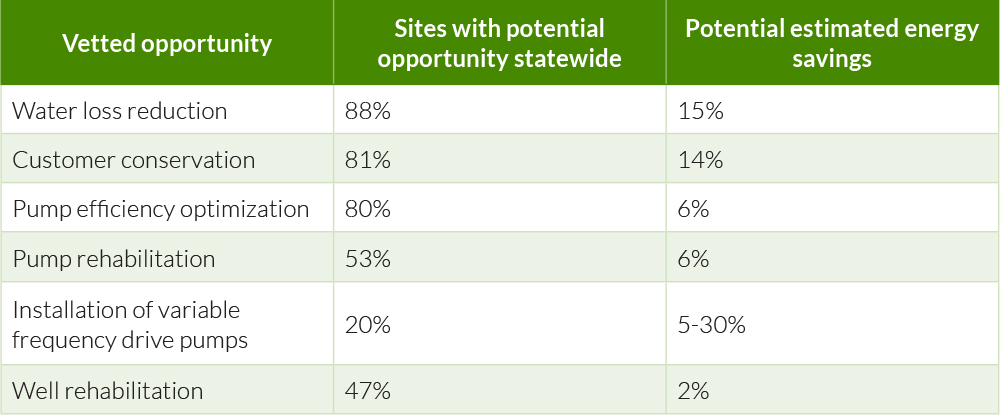A study by the Minnesota Technical Assistance Program (MnTAP) found that energy conservation at the state’s water plants could save as much as 42 million kWh of energy per year, cutting consumption by 14%.
Wastewater plants and drinking water utilities are typically municipal government’s largest energy consumers, according to the U.S. EPA, often accounting for 30% to 40% of their total consumption. Overall, drinking water and wastewater systems account for approximately 2% of energy use in the U.S., adding more than 45 million tons of greenhouse gases annually.
Energy can represent as much as 40% of drinking water systems’ operating costs, according to the EPA. By incorporating energy efficiency practices into their water and wastewater plants, municipalities and utilities can save 15% to 30%; this level of savings would mean that payback periods for efficiency investments would be a few months to a few years, the EPA says.

Distribution pumping accounts for almost two-thirds of a typical water utility’s energy consumption, with most of the remainder representing pumping of well or raw water, according to research by Lawrence Berkeley National Laboratory. Water treatment represents only 1% of energy use.
In a webinar earlier this month, Brent Vizanko, an MnTAP associate engineer, reported the findings of a two-year research project by MnTAP, part of the University of Minnesota’s School of Public Health.
The project used data from five municipal water treatment and supply facilities throughout the state. During the webinar Vizanko listed the top five energy conservation practices determined from the study:
- Optimizing pump efficiency (25 million kWh).
- Rehabilitating well and pump systems (9.3 million).
- Reducing water leaks and losses (3.5 million).
- Incentivizing customer conservation practices (2.7 million).
- Optimizing volume and flow with variable frequency drive pumps, which control motor speed and torque (1.9 million).
An area with high potential is customer conservation, Vizanko said. Only 6% of plants in Minnesota have water conservation programs (for showers, faucets, toilets) or encourage use of high-efficiency appliances such as refrigerators, washing machines, heaters and tanks. Conservation by water customers can be promoted by offering rebates, he said.
Conservation partnerships between electric and water utilities could save 2.7 million kWh/year, said Vizanko. He outlined a plan in which water suppliers would receive rebates from electricity utilities for the cost of measurement equipment used to identify efficiency solutions such as optimizing pumps or reducing water losses. The electric utility would provide the rebate once savings are verified.
The study included surveys of a cross-section of the state’s water supply and treatment plants, interviews with a variety of industry stakeholders ranging from engineering firms to electric utilities, and detailed site assessments at a select number of water utilities.
Vizanko said the assessments of the five plants were originally planned as in-person visits during 2020, but due to the coronavirus, they were conducted remotely. Remote site visits involved data mining utility bills and other user-provided data sources to assess facility energy efficiency measures.
The project also revealed a potential obstacle in water energy conservation. While water loss averaged between 2.5% and 31% in state water utilities, 95% of those facilities do not have a plan to assess and address the issue.



